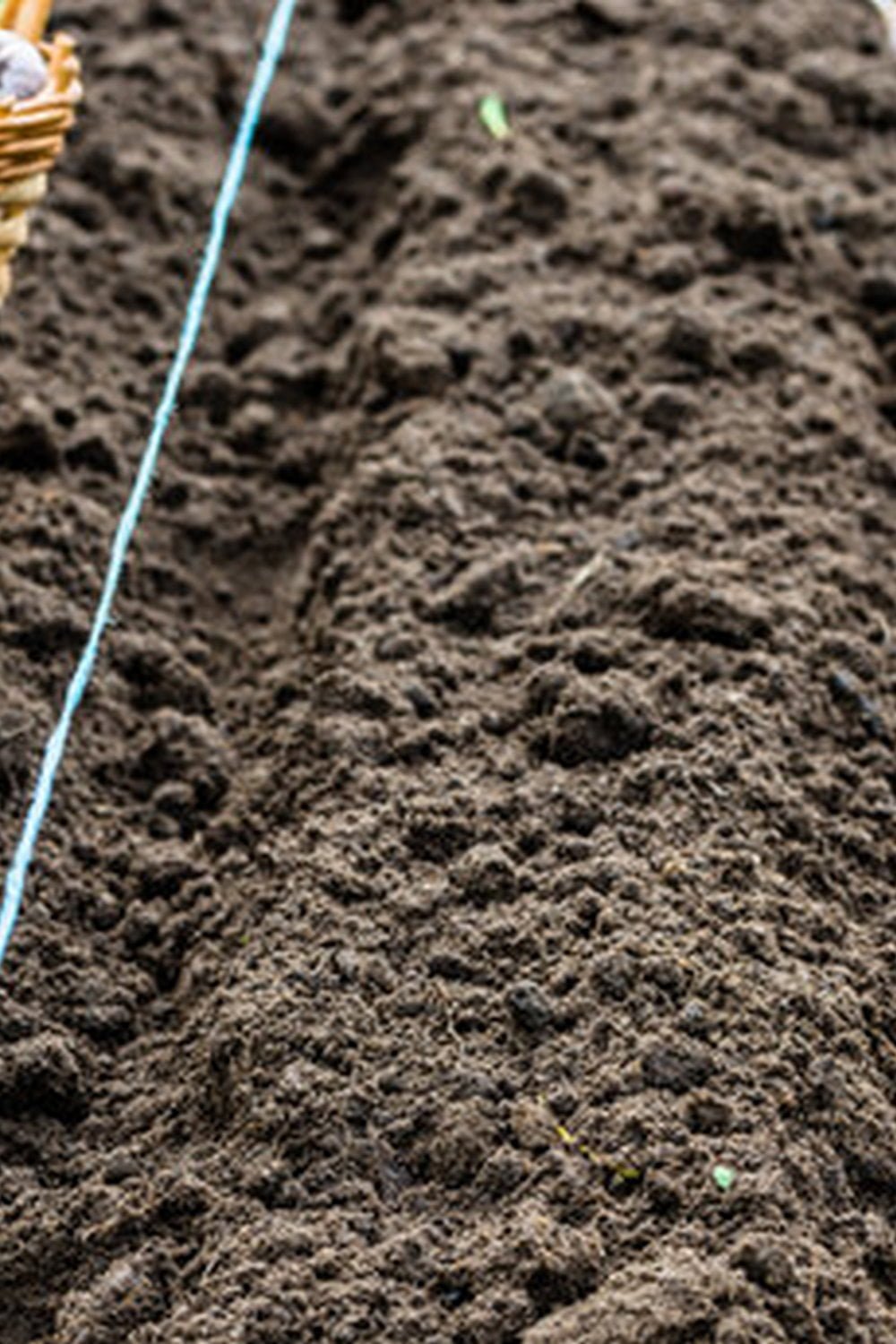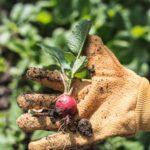Extreme heat can pose a significant challenge for vegetable gardening, as high temperatures can cause stress to plants and impact their growth and yield. In this article, we will explore the different techniques and strategies to help gardeners combat the effects of extreme heat on their vegetable crops. From choosing heat-tolerant varieties to proper soil preparation and watering techniques, we will provide valuable insights to help you maintain a successful vegetable garden in hot climates.
When it comes to vegetable gardening in extreme heat, selecting the right varieties is crucial. We will discuss the importance of choosing heat-tolerant vegetable varieties that are better equipped to withstand high temperatures and thrive in challenging growing conditions. Additionally, we will explore the significance of soil preparation and proper watering techniques to ensure optimal plant health and productivity during periods of extreme heat.
In addition, we will delve into the importance of providing shade and sun protection for vegetable plants in hot climates, as well as proper timing and scheduling for planting and harvesting. Our goal is to equip readers with the knowledge and tools necessary to overcome the obstacles presented by extreme heat and successfully maintain a bountiful vegetable garden.
Choosing Heat-Tolerant Vegetable Varieties
When it comes to vegetable gardening in extreme heat, choosing the right varieties can make a significant difference in the success of your garden. Selecting heat-tolerant vegetables is crucial for ensuring a bountiful harvest despite the challenging weather conditions. Here are some vegetable varieties that are known for their ability to thrive in hot climates:
- Tomatoes: Look for heat-tolerant varieties such as sun gold, cherry bomb, or solar fire that can withstand high temperatures and continue to produce sweet, juicy fruits.
- Peppers: Hot peppers like jalapenos, cayenne, and habaneros are well-suited for extreme heat and will continue to produce spicy peppers throughout the summer.
- Okra: This heat-loving vegetable thrives in hot weather and produces tender pods that are perfect for adding to soups, stews, and stir-fries.
- Summer Squash: Varieties such as zucchini and yellow crookneck squash are known for their resilience in high temperatures and consistent production during the summer months.
In addition to these heat-tolerant vegetables, consider planting drought-resistant herbs like rosemary, thyme, and oregano that can handle the stress of extreme heat. By choosing these varieties, you can set your vegetable garden up for success even in the hottest conditions.
Furthermore, if you’re gardening in an area with consistently high temperatures, it’s essential to look for specifically bred heat-resistant versions of your favorite vegetables. Many seed companies offer a wide selection of heat-tolerant cultivars that have been developed to perform well in challenging environments.
Consider researching and purchasing seeds or starter plants specifically labeled as “heat-tolerant” or “drought-resistant” to ensure the best possible outcome for your hot weather garden. By making informed choices about which varieties of vegetables to grow in extreme heat, you can set yourself up for a successful and productive growing season despite the challenges posed by high temperatures.
Soil Preparation and Watering Techniques for Extreme Heat
When it comes to vegetable gardening in extreme heat, proper soil preparation and watering techniques are crucial for the success of your garden. The first step in preparing your soil for extreme heat is to ensure that it has adequate drainage. This means incorporating organic matter such as compost or well-rotted manure into the soil to improve its structure and water retention capabilities.
In addition to soil preparation, effective watering techniques are essential for vegetable gardening in high temperatures. Adequate irrigation is vital to ensure that your plants receive enough moisture to withstand the heat stress. Consider installing a drip irrigation system to deliver water directly to the base of the plants, minimizing water loss through evaporation and ensuring that the roots receive a consistent water supply.
It’s also important to adjust your watering schedule based on the weather conditions. In extreme heat, you may need to water your vegetable garden more frequently to prevent the soil from drying out. However, be mindful not to overwater, as this can lead to root rot and other issues.
Using mulch around your plants can also help retain moisture in the soil and reduce water evaporation, especially during hot weather. By implementing these soil preparation and watering techniques, you can help your vegetable garden thrive even in extreme heat conditions.
| Soil Preparation | Watering Techniques |
|---|---|
| Ensure adequate drainage by incorporating organic matter into the soil | Consider installing a drip irrigation system for efficient water delivery |
| Adjust watering schedule based on weather conditions | Use mulch around plants to retain moisture and reduce water evaporation |
Shade and Sun Protection for Vegetable Plants
Extreme heat can be challenging for vegetable gardening, as it can cause vegetables to wilt and suffer from sunburn. Providing shade and sun protection for your vegetable plants is crucial in ensuring their growth and productivity during hot weather. Here are some tips for providing the necessary protection for your vegetable garden.
One effective way to protect your vegetable plants from the scorching heat of the sun is by using shade cloth. This material helps filter sunlight and reduce the intensity of the rays that reach your plants, preventing them from getting sunburned or dehydrated. Shade cloth also helps maintain a cooler temperature around the plants, creating a more favorable environment for their growth.
Another method to provide sun protection for your vegetable plants is by strategically planting taller crops or installing trellises to create natural shade. This can help shield smaller and more delicate plants from direct sunlight during the hottest parts of the day. Additionally, consider using mulch around your plants to retain soil moisture and prevent it from overheating.
In addition to these measures, it’s important to schedule watering times effectively and ensure that your plants receive enough hydration without being exposed to water stress in extreme heat. By implementing these strategies, you can protect your vegetable garden from the detrimental effects of high temperatures and create a more conducive environment for healthy crop development.
| Vegetable Gardening Tips | Shade and Sun Protection |
|---|---|
| Use shade cloth to filter sunlight | Prevent sunburn and dehydration |
| Plant taller crops or install trellises for natural shade | Shield smaller plants from direct sunlight |
| Implement effective watering schedules | Ensure hydration without water stress |
Proper Timing and Scheduling for Planting and Harvesting in Hot Climates
When it comes to vegetable gardening in extreme heat, proper timing and scheduling for planting and harvesting can make a significant difference in the success of your garden. In hot climates, it’s essential to pay attention to the timing of planting to ensure that your vegetables have the best chance of thriving in the challenging conditions.
Choosing the Right Time for Planting
One of the keys to successful vegetable gardening in extreme heat is choosing the right time for planting. It’s important to avoid planting too early in the season when temperatures are still scorching. Instead, wait for a slight decrease in temperature before starting your garden. Additionally, consider planting heat-tolerant varieties that are better equipped to withstand high temperatures.
Strategic Scheduling for Harvesting
In hot climates, scheduling your harvesting activities strategically can help ensure that you maximize your vegetable yield. Harvesting during the cooler parts of the day, such as early morning or late evening, can prevent unnecessary stress on both you and your plants. Additionally, keeping a close eye on your crop’s development and harvesting promptly when they reach maturity can help prevent damage from prolonged exposure to extreme heat.
Understanding Seasonal Changes
As temperatures fluctuate throughout the summer months in hot climates, it’s essential to be aware of seasonal changes that may impact your vegetable garden. Keep track of weather patterns and be prepared to adjust your planting and harvesting schedule accordingly.
By staying informed about temperature trends and local climate patterns, you’ll be better equipped to manage your garden effectively despite the challenges posed by extreme heat. Remember, knowledge is power when it comes to combating the effects of high temperatures on vegetable gardening.
By implementing proper timing and scheduling strategies for planting and harvesting in hot climates, you can increase the likelihood of a successful vegetable garden even in challenging conditions. Through careful planning and thoughtful consideration of seasonal changes, you can navigate extreme heat while still enjoying a bountiful harvest from your garden.
Managing Pests and Diseases in High Temperatures
Pests and diseases can become more prevalent in extreme heat, making it crucial for vegetable gardeners to be proactive in managing these challenges. Here are some effective strategies for keeping your plants healthy and thriving even in hot climates.
Companion Planting
One natural way to deter pests in your vegetable garden is through companion planting. By carefully selecting plant combinations, you can create a natural barrier against harmful insects. For example, planting marigolds alongside your vegetables can help repel nematodes and other destructive pests. Additionally, certain herbs like basil and thyme can act as natural pest repellents when planted near susceptible crops.
Regular Inspection
In high temperatures, plants are more susceptible to stress, making them more vulnerable to infestations and diseases. It’s essential to regularly inspect your vegetable garden for any signs of trouble such as wilting leaves, discolored spots, or evidence of insect activity. Early detection of issues allows for prompt action before they worsen and spread throughout the garden.
Natural Pest Control Methods
Consider using natural pest control methods such as neem oil, insecticidal soap, or diatomaceous earth to combat common garden pests without resorting to harsh chemical pesticides. These products are effective at controlling pests while being safer for the environment and beneficial insects like bees and butterflies. Additionally, encouraging natural predators like ladybugs and lacewings can help keep pest populations in check.
By implementing these strategies for managing pests and diseases in high temperatures, you can protect your vegetable garden from potential threats while promoting a healthy growing environment for your plants. Remember that prevention is key, so staying vigilant and proactive will help ensure a successful harvest even in extreme heat.
Tips for Maintaining Soil Moisture and Nutrient Levels in Extreme Heat
One of the biggest challenges of vegetable gardening in extreme heat is maintaining soil moisture and nutrient levels. In hot climates, the intense sun and high temperatures can quickly evaporate moisture from the soil, leaving plants parched and nutrient-depleted. To combat these issues, gardeners must employ specific techniques to ensure their vegetable plants remain healthy and productive.
One effective way to maintain soil moisture in extreme heat is through the use of mulch. Applying a layer of organic mulch, such as straw or wood chips, around the base of vegetable plants can help to conserve moisture by reducing evaporation from the soil. Additionally, mulch helps regulate soil temperature, keeping it cooler during the scorching heat of summer. This not only benefits the plants’ roots but also creates a more hospitable environment for beneficial soil organisms.
In addition to using mulch, implementing a regular watering schedule is crucial for vegetable gardening in extreme heat. It’s essential to water deeply and thoroughly to ensure that moisture reaches the plant’s root zone. Early morning is often the best time to water, as it allows for optimal absorption before the heat of the day sets in.
Drip irrigation or soaker hoses are also useful tools for delivering water directly to the base of plants while minimizing evaporation. Moreover, using a moisture meter can help gardeners accurately gauge when their plants require additional hydration during periods of extreme heat.
Overall, maintaining proper soil moisture and nutrient levels is vital for successful vegetable gardening in extreme heat. By utilizing techniques such as mulching, strategic watering, and monitoring soil conditions, gardeners can help their plants thrive despite challenging weather conditions.
Harvesting and Storing Vegetables in Hot Weather
When it comes to vegetable gardening in extreme heat, harvesting and storing your produce properly is crucial to ensure that all your hard work doesn’t go to waste. High temperatures can accelerate the ripening process of many vegetables, making timely harvesting essential. Here are some tips for harvesting and storing vegetables in hot weather:
1. Harvest at the right time: It’s important to harvest your vegetables at the right time to ensure optimal flavor and texture. In hot weather, vegetables like tomatoes, cucumbers, and zucchini can ripen quickly, so it’s important to check your garden regularly for ripe produce. Use a sharp knife or scissors to harvest fruits and vegetables without damaging the plant.
2. Proper storage: After harvesting, it’s important to store your vegetables properly to maintain their freshness. Some vegetables, like leafy greens and herbs, can wilt quickly in extreme heat. Store these types of produce in the refrigerator or a cool, shaded area to prolong their shelf life.
3. Quick processing: In hot weather, it’s best to process your harvested vegetables as soon as possible. This could include washing, trimming, blanching, and freezing or canning them for long-term storage. Properly processed vegetables will retain their quality despite the high temperatures.
By following these tips for harvesting and storing vegetables in hot weather, you can enjoy the fruits of your labor even during extreme heat. Proper timing and storage techniques will allow you to maximize your vegetable yield and minimize waste in challenging climates.
Conclusion
In conclusion, vegetable gardening in extreme heat can be challenging, but with the right knowledge and techniques, it is definitely possible to have a successful and bountiful garden. Throughout this article, we have explored the impact of extreme heat on vegetable gardening and discussed various strategies for overcoming the challenges presented by high temperatures.
Choosing heat-tolerant vegetable varieties, proper soil preparation, watering techniques, shade protection, and managing pests and diseases are all crucial aspects of maintaining a healthy garden in hot climates. Additionally, timing and scheduling planting and harvesting, as well as maintaining soil moisture and nutrient levels, play a significant role in ensuring the success of your vegetable garden.
It is important to remember that despite the challenges, there are numerous benefits to vegetable gardening in extreme heat. Not only does it allow for the production of fresh and nutritious produce, but it also provides an opportunity for physical activity and relaxation.
By implementing the tips provided in this article, you can enjoy a thriving vegetable garden even in the midst of scorching temperatures. So roll up your sleeves, get out into the garden, and make the most of your vegetable gardening experience in extreme heat.
Frequently Asked Questions
How Hot Is Too Hot for Vegetable Garden?
Generally, most vegetables can tolerate temperatures up to 90-95°F, but any hotter than that can be too hot for a vegetable garden. When temperatures exceed this range, vegetables may experience heat stress, wilting, and reduced yields.
What Vegetables Can Survive 100 Degree Weather?
Some vegetables that can survive in 100-degree weather include okra, eggplant, peppers, sweet potatoes, and cherry tomatoes. These plants have adapted to warmer climates and can withstand high temperatures with proper care and maintenance.
How Do You Grow Vegetables in Extreme Heat?
To grow vegetables in extreme heat, it’s important to provide ample shade and protection from the sun. This can be achieved by using shade cloth, planting taller crops as natural shade for smaller ones, and watering frequently to keep the soil cool and moist.
Additionally, choosing heat-tolerant varieties of vegetables is essential for successful growth in extreme heat conditions.

If you’re looking to get into vegetable gardening, or are just looking for some tips on how to make your current garden better, then you’ve come to the right place! My name is Ethel and I have been gardening for years. In this blog, I’m going to share with you some of my best tips on how to create a successful vegetable garden.





